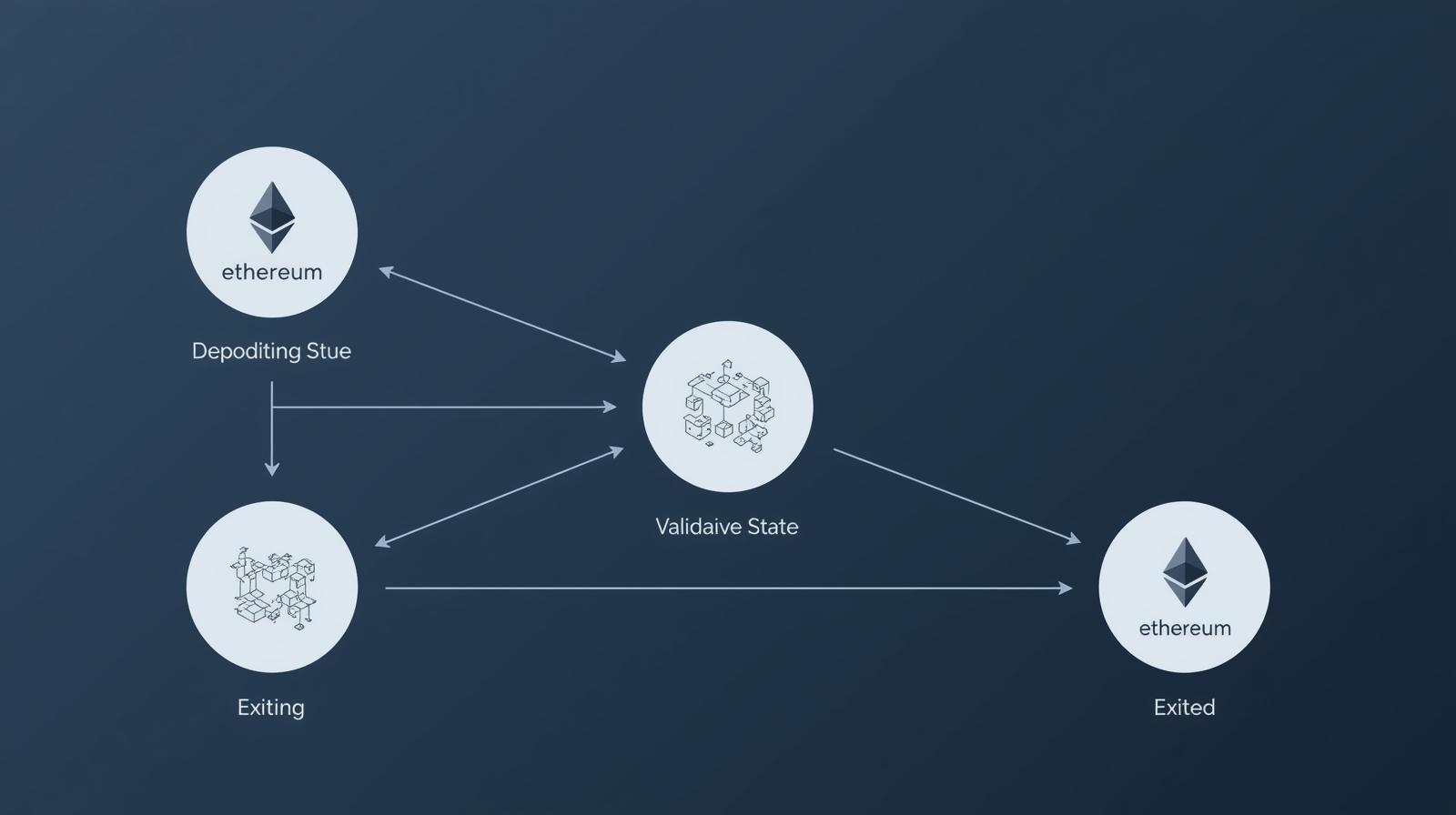Ethereum has gone through one of the biggest transformations in blockchain history. With the Merge in September 2022, Ethereum shifted from the energy-intensive Proof of Work (PoW) system to the more efficient Proof of Stake (PoS). This change not only reduced Ethereum’s energy consumption by over 99% but also introduced an entirely new system of rewards for those who help secure the network.
These rewards are known as staking rewards, and they are central to Ethereum’s long-term sustainability. In simple terms, staking means locking up your ETH to support the network in exchange for earning yield, much like how traditional investors earn interest on savings accounts or dividends from stocks.
But how do these rewards work? What determines their size? And what are the risks of staking? Let’s break everything down in detail.
How Ethereum Staking Works

To understand rewards, we first need to understand the mechanism of staking itself.
In Proof of Stake, instead of miners solving puzzles, validators are chosen to propose and verify new blocks of transactions. To become a validator, you need to deposit 32 ETH into the official Ethereum staking contract. Once active, your validator participates in the network and earns rewards for honest behavior.
But running a validator requires technical knowledge, hardware, and uptime management. For this reason, alternatives have emerged:
-
Solo Staking – Running your own validator with 32 ETH.
-
Pooled Staking – Joining forces with other investors via platforms like Coinbase or Binance.
-
Liquid Staking – Using decentralized protocols like Lido or Rocket Pool that give you a “liquid staking token” (like stETH or rETH) in exchange for your ETH, so you can still use your staked funds in DeFi.
Each method has different rewards, risks, and levels of control.
How Ethereum Staking Rewards Are Generated
Staking rewards come from multiple sources:
-
Base Rewards – Validators are paid ETH for proposing and attesting blocks. The exact amount depends on the total number of validators. If there are fewer validators, rewards are higher, and vice versa.
-
Priority Fees (Tips) – Users pay gas fees to get their transactions processed faster. Validators receive these tips in addition to their base rewards.
-
MEV (Maximal Extractable Value) – Validators can reorder or include transactions in a way that maximizes profit, often by capturing arbitrage or liquidations in DeFi. MEV has become a major source of rewards.
-
Penalties and Slashing – While validators earn rewards for honest participation, they can also lose ETH if they go offline frequently or act maliciously.
Overall, Ethereum staking rewards are dynamic and fluctuate depending on network activity, transaction volume, and the number of validators.
Factors Affecting Staking Rewards
Ethereum staking rewards are not fixed like a traditional bank interest rate. They are influenced by multiple variables:
-
Number of Validators – More validators = rewards spread thinner = lower APY.
-
ETH Burn (EIP-1559) – Part of the transaction fee is permanently burned, reducing ETH supply. This can offset inflation and make ETH deflationary, indirectly affecting staking yields.
-
Network Activity – High demand for block space (NFT mints, DeFi trading) increases transaction fees and tips, boosting validator rewards.
-
MEV Opportunities – In times of heavy DeFi trading, MEV extraction can significantly increase staking returns.
-
Inflation Schedule – Ethereum no longer has fixed inflation, but new ETH issuance to validators still plays a role.
In 2025, typical staking rewards range between 3% to 6% annually, depending on market conditions.
Types of Ethereum Staking
1. Solo Staking
This means running your own validator node. You need 32 ETH, reliable hardware, and technical skills.
-
Pros: Maximum control, no third-party risk, full share of rewards.
-
Cons: High entry cost, technical challenges, risk of slashing if misconfigured.
2. Pooled Staking
Platforms like Coinbase, Binance, or Kraken allow you to stake any amount of ETH without running your own validator.
-
Pros: Easy to use, no technical setup.
-
Cons: Centralized, custodial risk, platforms may charge fees.
3. Liquid Staking
Protocols like Lido, Rocket Pool, and Frax ETH give you a liquid token (like stETH or rETH) representing your staked ETH. You can use this token in DeFi to earn extra yield.
-
Pros: Flexibility, liquidity, composability in DeFi.
-
Cons: Smart contract risk, protocol dependency.
4. Custodial vs Non-Custodial Staking
-
Custodial: Exchange controls your keys (e.g., Coinbase, Binance).
-
Non-Custodial: You keep control of your private keys (e.g., Rocket Pool, solo staking).
Pros and Cons of Ethereum Staking
Benefits
-
Earn passive income (3–6% APY).
-
Support Ethereum’s security and decentralization.
-
Hedge against ETH inflation.
-
Liquid staking unlocks extra opportunities in DeFi.
Drawbacks
-
ETH is locked (or illiquid) in some staking methods.
-
Risk of slashing if validators misbehave.
-
Smart contract bugs in staking protocols.
-
Centralization concerns with large staking providers like Lido and Coinbase.
Risks of Ethereum Staking
Even though staking sounds like “free money,” it comes with risks:
-
Slashing Risk – Validators acting maliciously or going offline can lose part of their stake.
-
Custodial Risk – Exchanges holding your ETH could be hacked, regulated, or go bankrupt.
-
Liquidity Risk – Some staking methods lock ETH for long periods. Even with liquid staking tokens, secondary markets can fluctuate.
-
Smart Contract Risk – Bugs or exploits in protocols like Lido or Rocket Pool can result in loss of funds.
-
Regulatory Risk – The SEC and global regulators are still debating whether staking services count as securities offerings.
Ethereum Staking Yields in 2025
As of 2025, staking yields typically hover between 3%–6% annually, but this can vary:
-
Solo stakers often earn closer to the higher end of the range.
-
Exchange staking may give slightly lower returns due to platform fees.
-
Liquid staking tokens may earn additional yield if used in DeFi lending or liquidity pools.
Historically, yields were higher (7–10% in early PoS days) but as more ETH has been staked, rewards have gradually declined.
Ethereum as a Yield-Bearing Asset
Ethereum staking has transformed ETH from a “purely speculative asset” into something resembling a yield-bearing bond. Unlike Bitcoin, which does not generate yield, ETH now offers ongoing returns just for holding and staking.
This makes ETH attractive for institutions that are used to traditional income-bearing assets like bonds, dividends, or real estate.
Investor Strategies for Staking
-
New Investors: Start with liquid staking for flexibility.
-
Long-Term Holders: Solo staking for maximum decentralization and control.
-
Risk-Averse Investors: Use reputable exchanges, though beware of custodial risks.
-
DeFi Enthusiasts: Use liquid staking tokens (like stETH) in lending protocols to maximize yield.
Over time, compounding rewards can significantly increase ETH holdings.
The Future of Ethereum Staking
Looking ahead, Ethereum staking will continue to evolve:
-
Institutional Adoption: With ETH ETFs approved, staking may become part of regulated products.
-
Reward Decline: As more ETH is staked, yields will naturally decrease.
-
Decentralization Pressure: Too much ETH concentrated in platforms like Lido raises concerns.
-
Global Regulations: Governments may clarify staking rules, shaping its future accessibility.
Despite these challenges, staking remains essential to Ethereum’s security and its long-term value proposition.
Conclusion
Ethereum staking rewards represent one of the most innovative features of the post-Merge ecosystem. By staking ETH, investors not only earn passive income but also play a direct role in securing the world’s second-largest blockchain.
While rewards fluctuate and risks exist, Ethereum’s staking economy has already proven to be a cornerstone of its value. For both retail and institutional investors, staking ETH is no longer optional — it is fast becoming the default.
FAQs
1. How much ETH do I need to stake?
You need 32 ETH for solo staking, but you can stake smaller amounts via pools or exchanges.
2. Is staking ETH safe?
Staking is relatively safe but comes with risks like slashing, liquidity issues, and smart contract vulnerabilities.
3. What is the current APY for ETH staking?
In 2025, it ranges from 3%–6% annually, depending on method and market conditions.
4. Can I use my staked ETH?
Yes, if you use liquid staking platforms, you receive a tokenized version (like stETH) that can be used in DeFi.
5. Will staking rewards decline over time?
Yes, as more ETH is staked, rewards per validator decrease.
